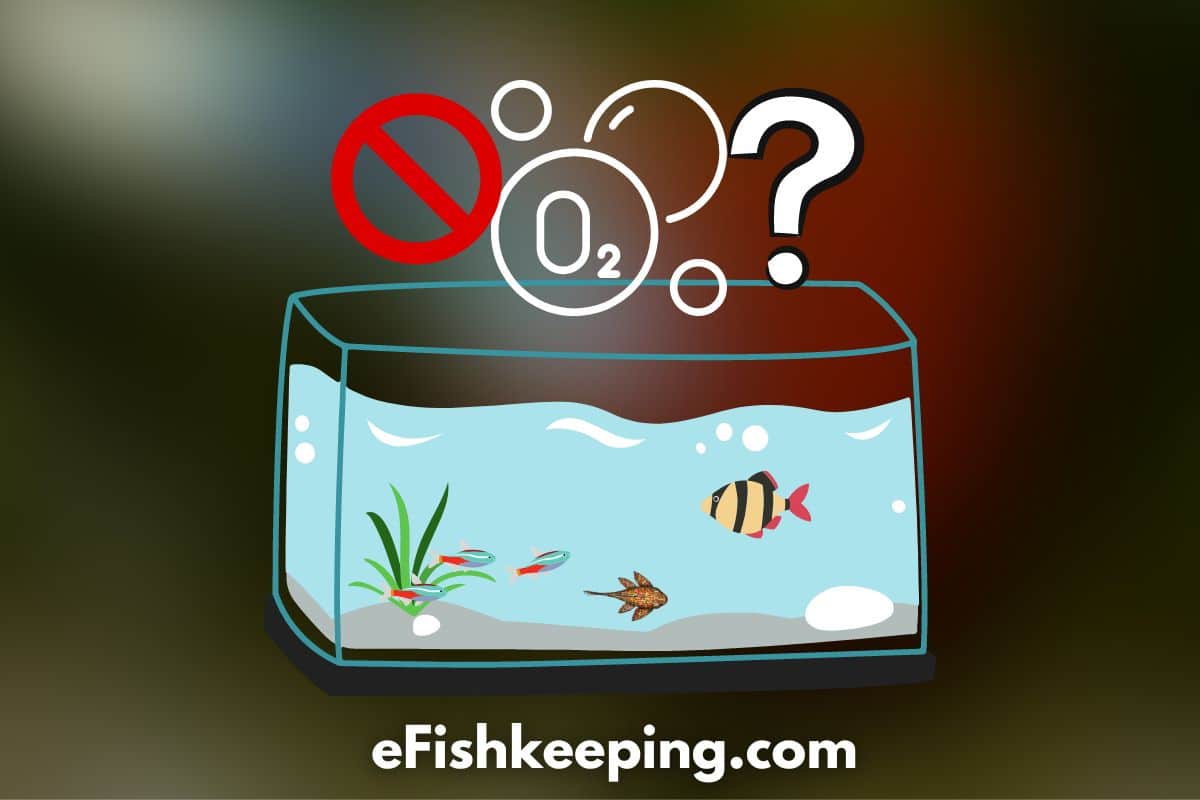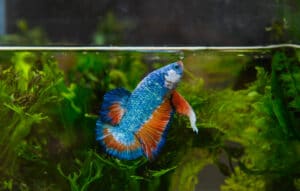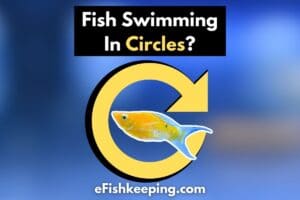This guide is perfect for you if you are looking for answers to any of these questions:
- How long can fish live without oxygen?
- How long can fish live without a filter?
- How long can fish live without an air pump?
Maybe you were going for a vacation and thought if your fish could survive without oxygenation in the tank. Or maybe you are worried about the power outages in your area. No matter what the case with you, I have got you covered.
Here’s How Long Fish Can Live Without Oxygen:
As a general rule, fish can survive only a few hours at minimum to about one or two days at the most without any oxygen in a tank. However, some fish like the bettas can survive in low-oxygen water conditions thanks to their special organ, the labyrinth.

Here’s a list of fish that can survive without any oxygen support in the tank:
- Betta Fish
- Spined loach
- Kuhli Loach
- Catfish
- Paradise fish
- Gourami
- Dwarf gourami
- Thick-lipped gourami
Overall groups of fish can survive without oxygenation support in the tank are: Aquarium Catfish, Loaches, and the Anabantoidei (labyrinth) group of fish.
The aquarium catfish or loaches usually use intestinal breathing and the atmospheric air to get their needed oxygen.

On the other hand, fish like Bettas have a special respiratory organ called a labyrinth in addition to having gills. (You also check out my guide on do betta fish need an air pump)
Providing oxygenation sources won’t harm any fish unless the water current becomes too much for them. Hence, it is advisable to provide adequate resources in the tank for your fish as much as possible.
If you live in a power outage-prone area, it is important to take precautions.
But honestly, here’s what we have experienced in our case.
Here where we stay, we sometimes had to face about 4-5 hours of power-cut. And sometimes it would even last for about 6 hours. However, we never had any issues with fish dying because of a lack of oxygen!
So you don’t need to worry if it’s only a matter of a few hours, like 4-6 hours. In most cases, fish can survive such lengths.
Just think about the life of fish in nature. Do they need oxygen support, like an air pump or filter? Nope! In natural conditions, they just live in rivers, ponds, or streams and rely completely on nature.
So why then do we need to worry about fish in the aquariums? Well, the water in natural conditions is, in most cases, moving water and has enough surface area.
As long as the fish can utilize the dissolved oxygen from the water adequately, they can easily survive!
But in our aquariums, the water remains ‘still’ when there is no air pump, no filter, and no air stones/bubblers. The gaseous exchange at the tank’s surface is also less in the lack of surface agitation.
And it is important to highlight that fish don’t get oxygen directly from the water.
The oxygen that is present in water can’t be separated. So most of the oxygen supply the fish get comes mainly from these ways:
- The gaseous exchange that happens at the water surface
- The oxygen that gets dissolved into the water through surface agitation/water movement
- From live plants – the photosynthesis process
If you have very few fish in the tank and many plants, your fish can survive in normal conditions without any filter or air pump.
But the problem starts when there are lots of fish in the tank. To give you a better analogy, it is similar to when we go to a big hall jammed with many people. Don’t we feel suffocated?
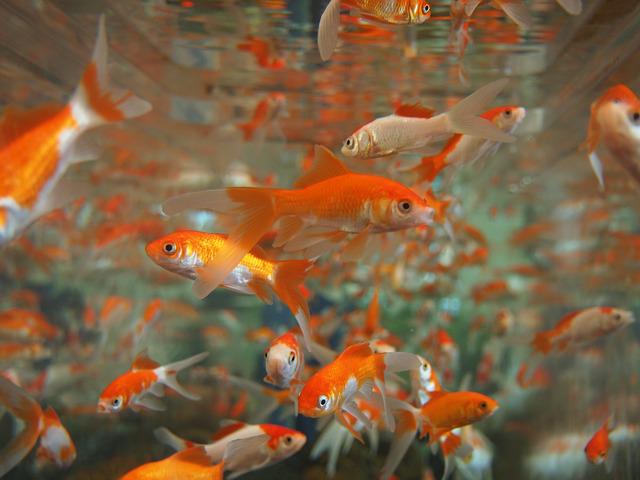
When there is a lot of fish in the tank, higher will be dissolved oxygen usage from the tank water.
As the water is limited, the oxygen dissolution in the tank water is limited; a time comes when the fish starts to feel a lack of adequate oxygen.
That’s when you will start seeing the fish coming to the surface and gasping for air.
Read: Fish Opening Mouth Rapidly? Reasons & Solutions
I have seen our fish gasping for air, and in many cases, the culprit was that our air pump stopped working. Don’t worry; in all the cases, we were active enough to make the air pump run again or find some alternate oxygenation source in the tank. No fish were harmed 🙂
But what I’m trying to say is that as soon as you see your fish gasping for air, consider it an alarming signal.
Caution! On average, in an ‘oxygen depleted tank,’ the aquarium fish don’t tend to survive more than a day. So better be safe than sorry and take adequate precautions.
Have inverter systems that enable you to run electrical appliances in your home. And if that is not possible, at least have a battery-powered air pump to use in case of power outages.

I highly recommend you to check this battery-operated air pump (available on Amazon) that can be super handy at times of emergency situations like power cut-off.
How To Quickly Increase Oxygen In The Tank?
If nothing is possible and you are in an emergency, use some of these methods to increase the oxygen levels of your tank.
Slowly pour water from a height: Take a small container, put some aquarium water in it, and slowly pour it back into the tank from a height. As you have assumed, water movement will be created, which helps in oxygenating the tank.
Use a fan to create water movement: You can put a fan (if there is no power, then hope you have a battery-powered one) near the top of the tank. Placing the fan will help the water to cool down and also create water movement (ripples) at the water surface, thereby promoting gaseous exchange at the water surface.
Manually stir the water: When no appliance is available, use your hands or any object to manually stir the water. This will generate water movements and help in gaseous exchange.
In short, the best way to immediately increase the oxygen levels in the tank is to increase the water movement.
Factors That Determine How Long Fish Can Live Without Oxygen In A Tank:
Here are some factors determining how long a fish can survive in a tank.
#1. Nature Of The Fish:
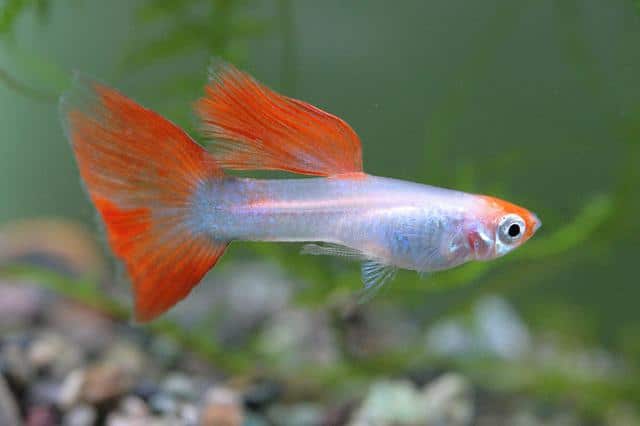
The type of fish you have is probably the biggest factor determining how long a fish can survive in a tank without oxygen.
We already saw previously how fish like bettas can survive in a low-oxygen environment.
Also, some fish are hardy and can likely survive in harsh conditions. For instance, guppies can survive without food for more than one week and tolerate a temperature of up to 15℃.
Guppies don’t need much oxygen and can survive in small fish bowls.
So, you don’t have to worry much if you have a hardy fish or a fish capable of surviving low oxygen environments. But rest, be sure to take adequate precautions.
#2. Surface Area Of The Tank:
So we know by now that one of the major oxygen sources fish utilizes is the oxygen dissolving from the air through the gaseous exchange.
The amount of surface area between water and air also affects the oxygen exchange rate. In other words, the more the surface area of the water, the more efficiently gaseous exchange can happen.
For instance, let’s take the example of a 20-gallon long tank and a 20-gallon high tank:
| Comparison: | 20 Gallon High Tank | 20 Gallon Long Tank |
|---|---|---|
| Dimensions (L x W x H) | 24″ x 12″ x 16″ | 30″ x 12″ x 12″ |
| Filled Weight | 225 lbs. | 225 lbs. |
| Surface Area (L x W) | 288 square inches | 360 square inches |
So as you can see, the surface area changes with the same tank type but with different dimensions.
And from the above example, we can understand that a 20-gallon long tank has more surface area, and thus more portals from oxygen can dissolve in the water.
Also, there is another benefit of a long tank, it is shallow, so the oxygen from the surface can work its way to the bottom of the tank at a faster rate.
In short, if you have a long and shallow tank and (considering all other factors to be equal) the oxygen exchange can happen more easily.
#3. Temperature Of The Tank:
The temperature of the water also plays a crucial role in how much oxygen it can hold.
There is an inverse relationship between dissolved oxygen and temperature. So when the water temperature level increases, the dissolved oxygen level decreases.
Hence, it is a fact that cold water can hold more dissolved oxygen compared to warm water.
#4. Lighting In The Tank:

Now, this factor is mainly related to the plants. We know live plants can give off oxygen and take in carbon dioxide. But in general, that happens only in the photosynthesis process. And that occurs only in the presence of light – either the aquarium light setup or the daylight.
However, the reverse scenario can happen when the tank is completely dark, and there is no light.
If the planted tank has no lights for a long time, it can start depleting the oxygen levels. And in addition, if you have an overstocked aquarium, and such problems occur, your fish can get affected.
#5. Fish Stocking Level In The Tank:
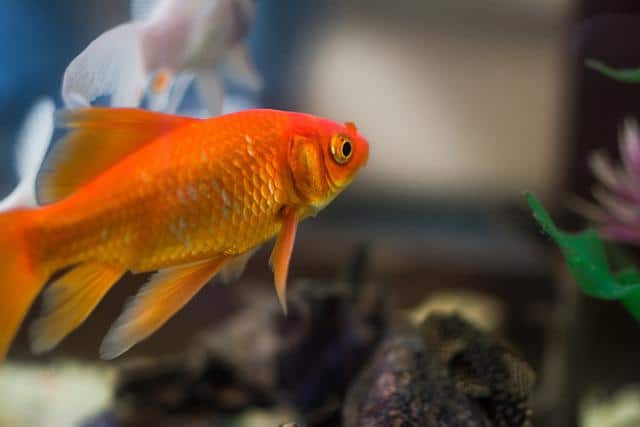
When there are too many fish in a tank, oxygen consumption will naturally increase.
The rate at which the overstocked fish consume tank oxygen in a tank will surpass the rate at which the tank is replenished with oxygen.
Therefore, a time will come when the oxygen levels will decrease, and the fish will start gasping if the tank is overcrowded.
#6. Usage Of Chemicals And Medications:
Some medications used to treat fish diseases and chemicals like water conditioners can affect the oxygen-carrying capability of the water in your fish tank.
As a precaution, please don’t forget to check the labels for such instructions whenever you use any medication or chemical.
Can A Fish Tank Run Out Of Oxygen?
If the tank is overstocked and lacks an adequate oxygenation source, it can run out of oxygen.
One of the most common signs is fish gasping for air at the surface. On average, fish cannot survive more than a day in an oxygen-depleted fish tank.
How Long Can Fish Live Without A Filter?
As a general rule, if the tank has no other oxygenation source, fish can only live about 1-2 days at maximum unless they can survive without any oxygenation. However, if there is an air pump present that ensures enough oxygenation in the tank all the time, fish can survive a long time.

Here I’m sharing with you all possible combinations of Filter & Air Pump and their effect on the life of fish. But before that, just to refresh the concepts quickly:
Air Pump:
- Provides Air Flow to the tank system through an air stone.
- Air Pump’s sole purpose is to provide air to the tank system.
- An Air Pump never cleans the tank; it only acts as aeration and ultimately an oxygenation source.
Filter:
- Filter primarily (just as its name suggests) does the job of filtering fish wastes and other dirt from the aquarium water.
- However, if it can create surface agitation, it also performs the role of oxygenating the tank.
- There’s no magic formula, and manual maintenance is needed even with filters.
[Please scroll horizontally (from right to left) on the table👈 if it is not visible completely]
| Combination | Filter: (Assuming It Helps In Oxygenation) | Air Pump: | Fish Life-Style | How Long They Can Live: | Explanation: |
| 1. | Not Running At All | Running All Time (24/7) | Normal | Several Weeks, Months, or Years depending on the lifespan of fish and other factors like tank water parameters. | Since Oxygenation is present, fish can live. The only issue is that tank parameters can be hard to maintain since there is no filter to clean up the waste. |
| 2. | Runs Only Partially (For Few Hours A Day) | Running All Time (24/7) | Normal | Several Weeks, Months, or Years depending on the lifespan of fish and other factors like tank water parameters. | Since Oxygenation is present, fish can live. (This combination is good for those who don’t like to keep the filter on all the time for reasons like not stressing out the fish with a heavy water flow of filter). |
| 3. | Running All Time (24/7) | Running All Time (24/7) | Normal | Ideal Setup | This is the ideal setup. Enough oxygenation is ensured. Also, one can maintain tank water quality and cleanliness easily. |
| 4. | Running All Time (24/7) | Runs Only Partially (For Few Hours A Day) | Normal | Several Weeks, Months, or Years depending on the lifespan of fish and other factors like tank water parameters. | Unless the fish is stressed by the heavy water flow of the filter all the time, everything should go normal. |
| 5. | Running All Time (24/7) | Not Running At All | Normal | Several Weeks, Months, or Years depending on the lifespan of fish and other factors like tank water parameters. | Unless the fish is stressed by the heavy water flow of the filter all the time, everything should go normal. |
| 6. | Not Running At All | Not Running At All | Problematic! Unless The Fish Can Tolerate | Since There is No Oxygenation, how long fish can survive depends on their ability to breathe oxygen from the surface. | This usually happens when there is a power cut or if you have deliberately kept your fish without any oxygenation source. Unless fish can live without oxygen, there will be problems, and fish may start gasping. |
Can I Leave My Fish Without A Filter For A Day?
You can surely leave if the fish tank has an air pump connection that constantly helps in aeration and oxygenation.
However, if there is no oxygenation source, it is good to set up a battery-run air pump to keep the aeration going in the tank.
How Long Can Fish Live Without An Air Pump?
If the tank has no other oxygenation source, fish can only live about 1-2 days without an air pump. However, if there are filters that provide adequate oxygenation for the tank, an air pump is not necessary.

Air Pump is just a device that is connected to an electric source. When you turn on the power, just as its name suggests, it functions to pump air into the tank through air lining tubes.
The air pump can either pump air to a filter (for example, a sponge filter) or an air stone/bubbler. Also, it can pump air both simultaneously depending on how you set it up.
If there is a filter in the tank that is enough to provide oxygenation, and you keep it running 24/7, you don’t even need an air pump.
For instance, if you have a top filter and a powerhead set up in your tank. If the powerhead generates enough surface agitation and ensures proper oxygenation in the tank, you don’t require any air pump.
I also have a video of my powerhead set up in one of our aquariums with the top filter. You can watch it to get some ideas:
However, in addition to not having an air pump, the tank has no other oxygenating source, and the situation is different. Therefore, it becomes similar to not having any oxygenation in the tank.
If there is no filter, never mind, have at least an air pump and air stone setup. This should be enough to properly oxygenate your tank. Of course, if you have a bigger tank, the requirement may be more, but that should give you an idea.
You can try out other tank oxygenation sources when Air Pump remains unavailable.
|
Images:
|
Items:
|
Links: |
|
Powerhead
|
||
|
Wavemaker
|
||
|
Spray Bar
|
Anything that can create surface agitation/ water movement at the surface can help you!
Case-3: What To Do When We Are Going Out For A Vacation?

For vacation, you can leave without any worry, but only if all the following conditions are fulfilled:
- First, the vacation trip is not too long.
- Second, you have someone to at least feed and inspect your fish every day. (Who can even report to you if there are any issues.)
- Third, power outages very rarely happen in your area.
- And even if they happen, you have an inverter system installed or battery-powered air pumps.
If your family members or neighbors are generous enough to take good care, that’s great! But if not, then you can also ask your friends or any pet sitting service for help if available.
Case-4: What To Do When A Power Outage Occurs?

For power outages that occur either due to storms or for general reasons, the same precautions as having an inverter or battery-powered air pump are advisable.
However, if that’s not possible, make sure to generate enough water movement (surface agitation) by any means.
- Pour back water into the tank from a height using a container.
- Manually stir the water to create water movement and surface agitation.
- Use battery powered fan or anything like that to create water movement.
Final Thoughts
In short, fish can survive without a filter. However, you must keep the oxygenation source in the tank 24/7. For example, you must have at least an air stone running via an air pump all the time in the absence of other oxygenation source in the tank.
Fish can survive without oxygen for a few hours or at most up to a day or two. (Yes, ruling out the exceptions such as fish like betta, which can easily survive in low oxygen waters, or the hardy fish).
But why take risks? If you are serious about your fish, you can have a battery-powered air pump. Or, if power outages are too common in your area, have something like an inverter installed. Hope that helps!
If this article has really helped you, please share it with others. You can also subscribe to my YouTube channel (search: eFishkeeping on YouTube). Thank You and see you again.
Recommended Read: 7 Smart Ways To Aerate A Fish Tank Without A Pump!
Hi! I’m Praveen Ghoshal, the founder of eFishkeeping.com. Inspired by my Dad, I got interested in fishkeeping when I was a kid. Since then, I have been involved with this hobby. Currently, I have 3 fish tanks at our home, and I enjoy this hobby with my full family. Read more about me here.

